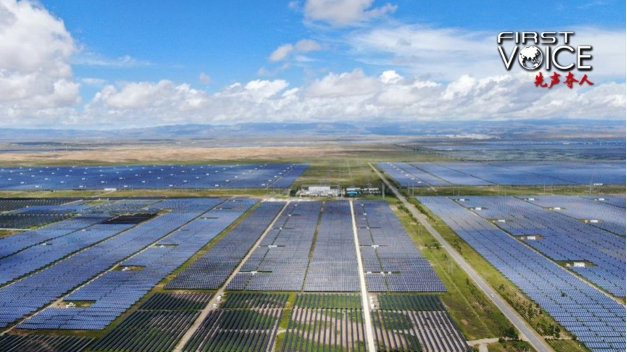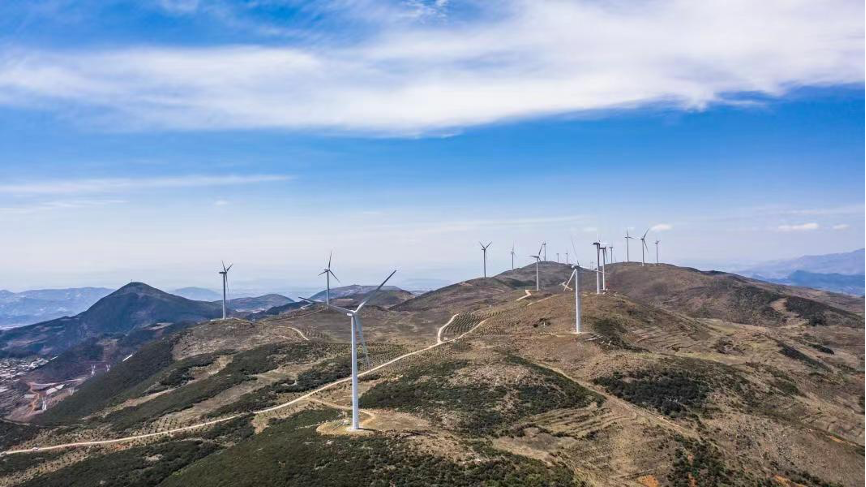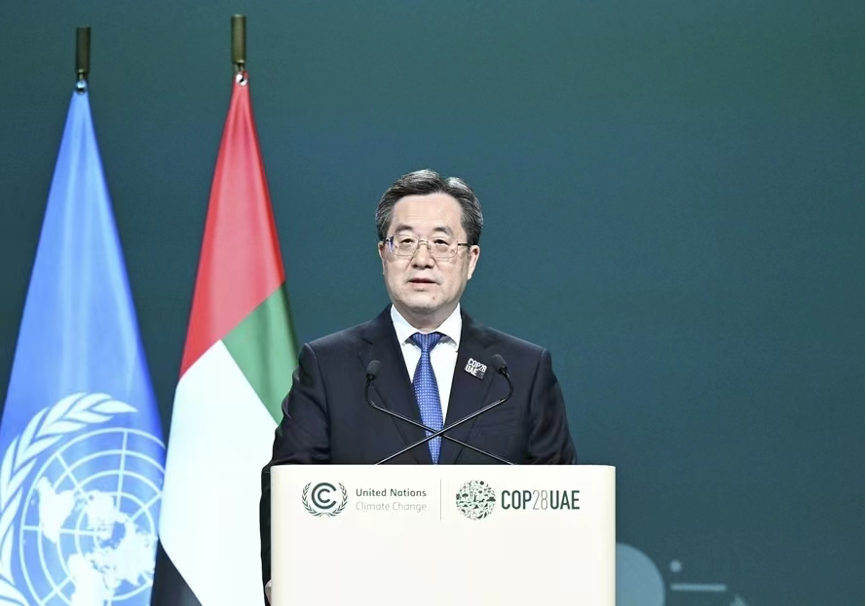
Editor's note: CGTN's First Voice provides instant commentary on breaking stories. The column clarifies emerging issues and better defines the news agenda, offering a Chinese perspective on the latest global events.
In the old days, public bathhouses were special "scenery" in Chinese cities. In those days of resource shortages, taking a hot bath at home was not easy for many Chinese families. As a result, public bathhouses where ordinary Chinese can enjoy a hot shower and a relaxing rubdown with only a few coins sprang up in China.
But today, these public bathhouses are gradually becoming history. Among others, the popularity of solar water heaters is, without doubt, the main driving force. With rows of solar panels replacing public bathhouses to be new "scenery" in Chinese cities, China is leading its way to a low-carbon lifestyle.
From household solar products to power generation, China is a rising power in the photovoltaic industry. Just over a decade ago, China's photovoltaic industry relied heavily on foreign countries for both raw materials and technology. According to Xinhua reports, before 2013, welding machines in Chinese photovoltaic factories were imported from foreign countries including Germany, the U.S., Spain, and Japan.
Today, statistics from the China Photovoltaic Industry Association show that Chinese enterprises rank first in global production of the four key elements –polycrystalline silicon, silicon wafers, battery cells, and modules – in photovoltaic manufacturing.

Power-generating windmill turbines in Weining County, southwest China's Guizhou Province. /Xinhua
Power-generating windmill turbines in Weining County, southwest China's Guizhou Province. /Xinhua
China's rise in the photovoltaic industry demonstrates the country's determination to implement its low-carbon policy and address the global climate crisis. Since 2022, China has seen rapid progress in new energy including photovoltaic and wind power, resulting in the first year-on-year decline in the degree of dependence on external sources of both oil and natural gas in 30 years.
According to the National Energy Administration, as of the end of June 2023, the installed capacity of renewable energy in China had exceeded 1.3 billion kilowatts, surpassing the installed capacity of coal power for the first time in China's history. China's installed capacity of wind power, photovoltaic power, hydropower, and biopower ranks first across the world.
To tackle the global climate crisis, China, while putting more focus on developing renewable energy, has been striving to make traditional energy more efficient. By developing its circular economy, China has decreased its carbon dioxide emission intensity by more than 51 percent in 2022, compared with 2005, and reduced nearly 3 billion tons of carbon dioxide emissions in the past decade.

A view of the Expo City in Dubai, the United Arab Emirates. /CGTN
A view of the Expo City in Dubai, the United Arab Emirates. /CGTN
In September 2020, Chinese President Xi Jinping announced that China aims to have carbon dioxide emissions peak before 2030 and achieve carbon neutrality before 2060. In November this year, China and the U.S. decided to cooperate through the Working Group on Enhancing Climate Action in the 2020s during the San Francisco summit. With unprecedented efficient and pragmatic actions, China has become a key participant, contributor, and leader in global climate governance.
As a responsible developing country, China announced in 2021 that it would no longer build new coal-fired power projects overseas and has been supporting low-carbon actions in other developing countries. On the one hand, China has been making the best use of international platforms to participate in global climate governance, strengthen South-South cooperation in climate change, assist island countries in consolidating their disaster prevention and reduction mechanisms, aid African nations in developing renewable energy, and address electricity shortages in impoverished households.

China Pavilion of COP28 in Dubai, the United Arab Emirates. /Xinhua
China Pavilion of COP28 in Dubai, the United Arab Emirates. /Xinhua
The De Aar Wind Farm operated by China Longyuan Power Group Corporation Limited, for instance, generates more than 750 million kilowatts annually in South Africa, saving over 200,000 tons of standard coal and reducing carbon dioxide emissions by more than 700,000 tons, according to Xinhua.
On the other hand, China, by advancing the Belt and Road Initiative International Green Development Coalition, has been actively providing financial support and action plans for developing countries. This has demonstrated China's determination and responsibility in promoting global climate governance. So far, China has allocated about 1.2 billion yuan ($168 million) for South-South climate cooperation.

Chinese President Xi Jinping's Special Representative Ding Xuexiang addresses the World Climate Action Summit in Dubai, the United Arab Emirates, December 1, 2023. /Xinhua
Chinese President Xi Jinping's Special Representative Ding Xuexiang addresses the World Climate Action Summit in Dubai, the United Arab Emirates, December 1, 2023. /Xinhua
Just as Chinese President Xi Jinping's Special Representative Ding Xuexiang said at the World Climate Action Summit in Dubai, the United Arab Emirates, all parties should strengthen their determination and capacity to jointly address the challenges of climate change. While taking concrete actions to battle global warming, China also urges the international community to adhere to the goals and principles set out in the United Nations Framework Convention on Climate Change and the Paris Agreement, enhance solidarity and cooperation, and achieve mutual benefit and win-win results. In the face of global crises, cooperation is the only solution.
(If you want to contribute and have specific expertise, please contact us at opinions@cgtn.com. Follow @thouse_opinions on Twitter to discover the latest commentaries in the CGTN Opinion Section.)






